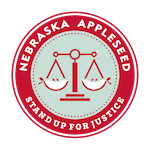By Tyeisha Thompson, Child Welfare Youth Fellow
I had the privilege of speaking with a special education resource teacher to better understand what it entails to teach, support, and care for students with special needs. This individual works explicitly with the life skills population at Pyrtle Elementary. The life skills population is the smallest population in the school with the highest needs. Examples include autistic kids who may be nonverbal, students with down syndrome who may need a lot of assistance, students with special needs who have health concerns, and others. To feel comfortable and succeed in school, these children require the most support during the school day.
There are two life-skill teachers at Pyrtle Elementary. One teacher works with kindergarten through second grade, and the other helps with third through fifth grades. The support of each student is the main objective of special education teachers. As a result, for some students, that means remaining in the classroom with their classmates. Others function well by continuing to work one-on-one with a teacher while in the life skills group. The teachers try to place kids in surroundings with the least restrictions so they can succeed. The children who require special education resource teachers’ assistance are often taken out of class for some small group work time.
For determining what the student needs to succeed, there are two procedures. The school may occasionally diagnose the child. More commonly, the students are more likely to come to the school with a diagnosis from an outside source. The needs, health issues, etc., of the student, as well as other factors, determine how and where a child is placed. Many nonverbal children are provided with specialized equipment to interact with others. Teachers monitor students’ behavior and make necessary adjustments to ensure their success.
When a child misbehaves, the special needs department follows two procedures. The teachers start by performing a functional behavioral analysis (FBA). To complete this analysis, teachers must comprehend “What is the function of the behavior?” Typically, when a student misbehaves, they’re attempting to obtain or avoid something. For instance, if a student receives a worksheet, they may throw it to the ground or, in more severe cases, flip their desks to avoid that worksheet. Once the staff decides on the function, they can work towards a specific plan to help the student with that response. Instead of flipping a desk, the child can learn to ask for help or a break. The teachers place more emphasis on positive possibilities with the student rather than overly emphasizing negative reactions.
Positive reinforcement is a great strategy teachers can employ when communicating with parents. The individual I talked with makes it a point to get in touch with the parents of students early in the school year with encouraging remarks to develop a relationship and earn their trust. In such a case, the parent will probably be able to handle the news better if something does occur. Even if an event does happen, the teacher will start with something encouraging before moving on to a more complicated topic.
The school’s culture is very welcoming and supportive. The individual stated, “Pyrtle is a great school and very accommodating, especially to the special needs children.” LPS, as a district, is concentrating on equity in every school. Every month, Pryle has a staff meeting focusing on equity problems and solutions. The culture is very vulnerable to tough topics because they are challenged to think about them and have open, honest conversations.


